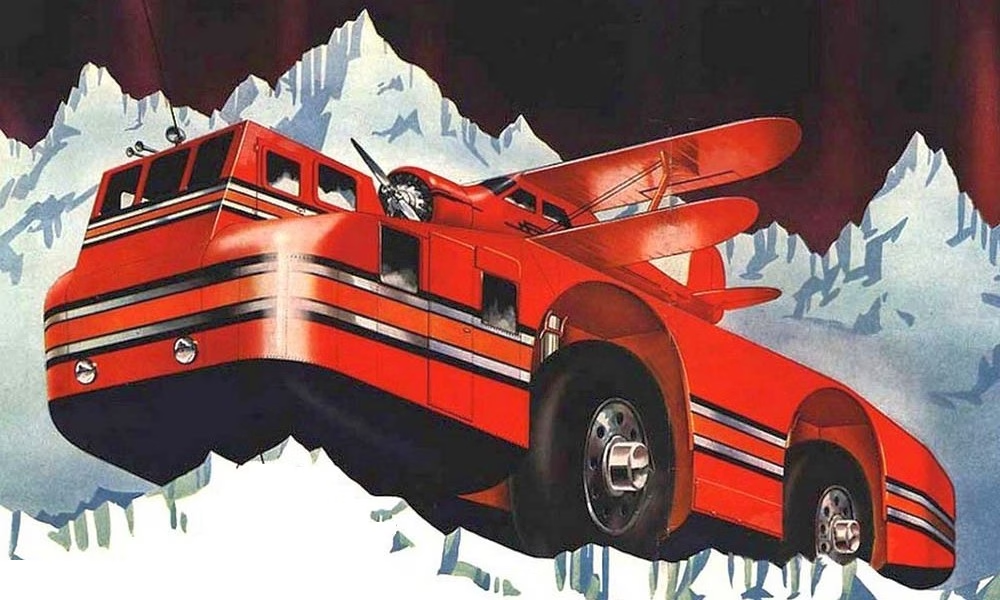
Imagine, if you will, a monstrous, futuristic vehicle, stretching an absurd 55 feet long, towering 16 feet high, and weighing 75,000 pounds. Now imagine that vehicle boldly heading to the most inhospitable place on Earth, designed to roll across ice and snow like a mechanical mammoth. Sounds impressive, right? Well, meet the Antarctic Snow Cruiser—a vehicle that was as ambitious as it was, well… doomed.
The Grand Vision: A Land Yacht for Ice Explorers
Back in the late 1930s, as tensions brewed worldwide and nations scrambled to stake their claims in the Antarctic, the United States decided to send an expedition to the frozen continent. Under the leadership of Admiral Richard E. Byrd—an explorer, aviator, and certified tough guy—the U.S. planned to establish bases, conduct research, and flex its technological muscles.
To aid in this mission, Dr. Thomas Poulter, a scientist and engineer with a vision (some might say too much vision), designed the Antarctic Snow Cruiser. This wasn’t just any vehicle—it was a self-sustaining mobile lab, complete with a diesel engine, living quarters, a galley, and even a place to store a small plane on its back. The goal? To traverse thousands of miles across Antarctica while carrying supplies, scientific equipment, and, presumably, the dreams of engineers who had never actually driven on ice.
The Great Debut: A Cross-Country Spectacle
In 1939, the Snow Cruiser was unveiled to the public in Chicago and then driven across the United States to its launch site in Boston. Crowds gathered in awe as the futuristic behemoth lumbered through towns, disrupting traffic and proving that, even in America, this thing was ridiculous.
It eventually made its way to Antarctica aboard the ship North Star and was unloaded at Little America III Base in early 1940. The expedition crew, now eager to see this mechanical marvel in action, fired up the engines, ready to conquer the Antarctic wilderness.

The Inevitable Reality Check
Then, something awkward happened: it didn’t work.
The Snow Cruiser’s giant tires, designed to be retractable to help it crawl over obstacles, were absolutely useless on ice and snow. Instead of floating majestically across the landscape like a winter warship, the massive machine sank into the snow like an overpriced paperweight. The smooth tread tires provided about as much grip as a greased-up penguin on a water slide.
Despite desperate attempts to improve traction—including wrapping the tires in chains—the Snow Cruiser proved completely ineffective. It could barely move forward, and when it did, it was slower than a sled pulled by a disgruntled polar bear.
The Fate of the Snow Cruiser: A Legend in the Ice
After some brief attempts at modifications, the crew simply… gave up. They used the vehicle as a stationary base and then, when the expedition ended, abandoned it altogether. As World War II broke out, any further efforts to retrieve or improve the vehicle were scrapped. The Snow Cruiser sat there, covered in snow, a frozen relic of engineering optimism gone awry.
Over the decades, various expeditions rediscovered it—once in 1946, then again in 1958, when it was found partially buried but still intact. Then, as if Antarctica itself decided to clean up the embarrassment, it disappeared. Some believe it sank into the ice and eventually drifted out to sea. Others think it’s still buried somewhere, waiting for another team of hopeful explorers to dig it up and once again say, “Well, that was a bad idea.”
Lessons from the Snow Cruiser
Despite its failure, the Antarctic Snow Cruiser remains an icon of bold engineering—proof that sometimes, vision and reality don’t exactly see eye to eye. It was ahead of its time in many ways, incorporating features that wouldn’t be seen in vehicles for decades, such as built-in self-repair systems, a mobile living environment, and all-wheel drive.
But the biggest takeaway? Test your vehicle in the actual terrain before sending it to one of the most brutal places on Earth.
If nothing else, the Snow Cruiser gave us an unforgettable story of human ambition, a massive machine lost to the ice, and a cautionary tale for engineers who dream just a little too big.
Who knows? Maybe one day, an expedition will stumble upon it again, and we’ll finally get a second chance to see if it can actually move forward. But if history is any indication, don’t hold your breath.




